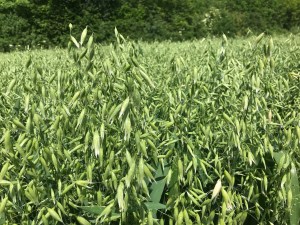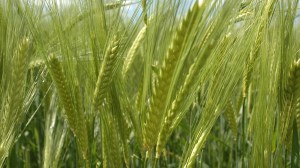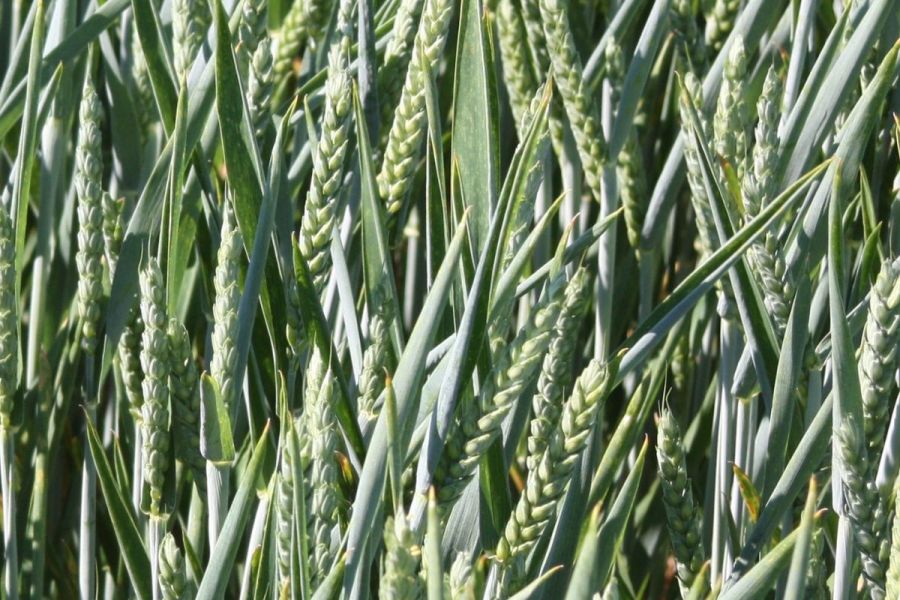The AHDB’s updated Recommended List for cereals and oilseeds was revealed as last month came to a close. The new varieties across the different crops are delivering large yield increases, especially in barley and oilseed rape. CPM takes a closer look at the movers and shakers.
By Lucy de la Pasture
This time last year there was a massive influx of new varieties on to AHDB’s Recommended List, with a record 37 new additions. By comparison, the launch of the 2023/24 RL is a much more considered affair, with just 28 newcomers across winter and spring wheat, winter and spring barley, oats and oilseed rape.
While the numbers may be lacking, which may well be welcomed by those who thought the RL was becoming unwieldy, there are some notable additions, including the first new winter malting barley and winter oat variety for several years, says Paul Gosling, who manages the RL at AHDB.
“We’ve seen relatively few new varieties on the lists this year. Several years of plant-breeding advances mean the recommendation bar is set high and relatively few candidate varieties performed better than the best listed varieties to secure a recommendation.”
It was a season that could have tested the RL trials, due to the heat and prolonged dry weather during the spring and summer, says Paul, but yields held up very well across all crops with only a few anomalies that had to be taken out of the datasets.
“We had good conditions in the autumn so crops established well, including OSR. There was also less pressure from cabbage stem flea beetle feeding than has been experienced over recent years,” he adds.
So what’s new on the 2023/24 RL and which varieties have now been superseded?
Wheat
With just five new additions, and three of these with regional recommendations only, the winter wheat list also loses four varieties KWS Barrel, KWS Kerrin, LG Spotlight and RGT Gravity.
The newcomers sit across Groups with one new UKFM Group 2 bread-making variety and one new UKFM Group 3 biscuit wheat. The list also adds two new soft Group 4 feed varieties and a hard Group 4, all of which have regional recommendations.
Group 2 variety KWS Ultimatum has good market potential, classified by ukp as a variety with potential for export. Its yield sits between comparator varieties KWS Extase and KWS Palladium at 101% of the controls. Good grain quality is a plus, with high specific weight its standout attribute at 79.6 kg/hl, which is higher than both Palladium (77.6 kg/hl) and Extase (79.4 kg/hl). It also has a decent Hagberg at 287, though this falls behind the other two comparators and its protein content at 12.3% follows the same trend.
Agronomically, Ultimatum is a relatively short variety which produces decent yields across rotational positions (based on some limited data). It has high resistance to yellow rust (9) and has given high untreated yields in UK trials at 93%, which is comparable with Palladium and below highly septoria resistant Extase (at 97%).
In Group 3 there is one newcomer for all regions, RGT Wilkinson, which is rated as a uks soft wheat for export and as medium for distilling. This new addition provides an incremental yield increase to its comparative varieties on the RL, KWS Brium (+1%) and LG Astronomer (+3%). Although its Hagberg is better than Astronomer, its Achilles heel may be its specific weight.
This short and stiff-strawed variety is high yielding in the West region, across rotational positions and on heavier soils. It has a very high yield potential in the East region and on lighter soils (based on limited data). Its breeders have also brought septoria resistance which may not be outstanding but offers a variety in this Group which has a non-Cougar lineage.
Wilkinson is relatively late-maturing and has high resistance to yellow rust and mildew. Limited data suggest that this variety may have a tendency to sprout, so it should be given priority at harvest.

The new RL features the first winter oat variety to be added since 2018. Cromwell, from Senova, offers good yield and grain quality.
The remaining new additions to the RL have regional recommendations, with two soft Group 4s – KWS Zealum and LG Redwald – and one hard endosperm Group 4 in Oxford.
Zealum is a high-yielding, soft-milling feed variety recommended for the North region only, where its ‘medium’ rating for distilling may be attractive, though it is late in terms of maturity. With regard to yield, it’s equal to Skyscraper in this region.
It has good resistance to yellow rust (9) combined with resistance to orange wheat blossom midge and produces an untreated yield which is also on a par with Skyscraper (86%).
Pushing the yield boundaries in this Group is soft-milling LG Redwald, which is recommended in the East and West regions where it outperforms Skyscraper and RGT Bairstow by 4% and 6% respectively. Redwald has the distinction of having the highest septoria resistance in Group 4 at 6.7, which should add to its attractiveness in the West. Its all-round strong package translates into an untreated yield of 92%, though lodging may be a weakness.
Hard Group 4 variety Oxford is a very high-yielding, hard-milling feed variety recommended for the East and West regions, though it tends to produce grain with a lower specific weight which tends to be less than KWS Dawsum but better than Champion.
This relatively late-maturing variety has moderate straw strength but responds well to plant growth regulators. It has high resistance to yellow rust (9), combined with resistance to OWBM and a respectable septoria rating of 6.4, which is just 0.3 behind Graham.
Three new varieties from KWS have been added to the spring wheat list, offering good grain quality and yields: UKFM Group 1 KWS Harsum, which has particularly high yield, and UKFM Group 2 KWS Alicium and KWS Lightum. All three varieties offer resistance to OWBM.
Barley
The RL 2023/24 includes several new barley varieties that bring strength to yield and disease resistance, including the first malting variety added since 2018, Buccaneer, from Saaten Union, It’s still under testing for its brewing potential but it offers a significant yield increase over the established two-row malting varieties, Craft and Electrum, alongside good disease resistance. Falling off the list are KWS Gimlet, Flynn, Jordan and Creswell.
Two new two-row and a new six-row hybrid varieties add strength to winter barley feed yields (compared with current favourites). The two rows are Bolivia, from Agrii (bred by Nordic Seed), and LG Caravelle from Limagrain. The latter offers a particularly high yield in the East region and a good specific weight. The new six-row hybrid SY Nephin, from Syngenta, is notable for its disease resistance ratings of 8 for brown rust and rhynchosporium.
A closer look at Buccaneer reveals this relatively tall two-row variety has given its best relative performance in the East and North regions (based on limited data). Over the three years of testing, Buccaneer has shown no major disease weakness. It has high resistance to rhynchosporium and is resistant to the common strains of barley mosaic viruses (BaMMV and BaYMV strain 1).
The second two-row addition Bolivia is a feed variety with a UK-wide recommendation. Over the three years of testing, this variety has given low screening levels. Stiff-strawed, Bolivia has performed well across a range of regions and soil types and has a very high treated yield potential in the East region. No major weaknesses in disease resistance have been identified in trials, with mildew resistance (7) a strength along with resistance to the common strains of barley mosaic viruses (BaMMV and BaYMV strain 1).
Topping the yield figures is LG Caravelle, which brings two-row yields into a similar ballpark to hybrid varieties for the first time. In spite of its high yield, Caravelle also has a very high specific weight. It performed well across all regions and soil types and has a very high treated yield potential in the East (109%) and West regions (105%), as well as on heavier soils. It looks to have a decent all round disease resistance package with its one weakness being net blotch. It’s also resistant to the common strains of barley mosaic viruses (BaMMV and BaYMV strain 1).
Winter barley six-row feed variety SY Nephin is recommended for the UK, with a very high specific weight which is similar to SY Canyon. This variety has a very high treated yield potential in the East and limited data suggests it’s high yielding in the North region but less impressive in the West. Growers should be aware that it’s a tall variety with moderate straw strength that requires careful management.

Limagrain’s new two-row barley, LG Caravelle, brings yields on a par with hybrids for the first time.
SY Nephin has the highest resistance to rhynchosporium on the RL and is resistant to the common strains of barley mosaic viruses (BaMMV and BaYMV strain 1).
There are six new spring barley varieties under evaluation by the Malting Barley Committee (MBC): three for brewing only, two for brewing and malt distilling, and one for malt distilling. These offer improvements in yield and/or disease resistance (compared with the current market leaders RGT Planet and Laureate).
Last year’s new additions all fell foul of making MBC standards so are amongst those removed from the RL – Jensen, SY Bronte, Spinner, SY Tungsten, SY Splendor and Fairway.
“RL 2023/24 delivers exciting potential for brewing and distilling. However, it’s a tough market to break into, with varietal success determined by end users. As varieties can fail to make the grade, farmers should talk to merchants before growing them,” warns Paul.
The spring barley list sees feed variety Hurler added. Bred by Secobra and available through Agrii, with high yields its standout feature.
Looking at the additions in more detail, Diviner is recommended for the UK, with potential for malt distilling use. This variety has a very high treated yield potential in the North region at 105% (+3% over Laureate and Diablo) and is high yielding in the East and West regions (104%). It’s a short, stiff-strawed variety with high resistance to brackling (9). Diviner has very high resistance to mildew (9), but limited data suggests it is very susceptible to rhynchosporium (3).
Florence, Sun King and SY Signet are a trio under consideration as brew-only varieties. Florence offers a significant advantage in terms of yield, particularly in the East and West regions (106%) and has a high yield potential for the North region. It’s a short, stiff-strawed variety with high resistance to brackling (9) and mildew (8) which may help contribute to its untreated yields in UK trials (95%), which outperforms both Planet and Laureate.
Sun King has a given high treated yields in both the East and North regions (104%), and limited data suggest it has a very high yield potential in the West region (107%). It’s a stiff-strawed variety with high resistance to brackling (9). Limited data suggests it’s susceptible to rhynchosporium (4) and tops the untreated yield data at 96%.
SY Signet looks relatively consistent across regions, averaging 104% above control variety yields in treated trials.
Offering dual-purpose potential are KWS Curtis and SY Tennyson. Tennyson has come up trumps in the East with yields at 107% of controls and has also performed well in both the North (+4% above Laureate and Diablo) and West regions but tends to give a low specific weight. It’s a short and relatively stiff-strawed variety with very high resistance to mildew but is susceptible to brown rust and limited data suggest it’s very susceptible to rhynchosporium.
KWS Curtis has a yield of 104% above controls across all regions and is a short, stiff-strawed variety with high resistance to brackling. It also has very high resistance to mildew and high resistance to rhynchosporium (based on limited data), but it is susceptible to brown rust.
Rounding off the new additions is feed variety Hurler which outperforms Skyway in terms of yield potential across all regions but tends to give a low specific weight (66.2 kg/hl). It’s a short, stiff-strawed variety with high resistance to brackling (9) and has given high yields in untreated UK trials, on a par with Skyway (94%). It’s susceptible to brown rust.
Oilseed rape
The winter OSR list features three new UK-recommended hybrid varieties: Vegas and Turing, from LSPB, and Attica, from Limagrain. Turing and Attica have especially high yields in the North region.
Recommended for the East/West region, Murray, from LSPB, has a high yield and a resistance rating of 8 for stem canker. Recommended for the North region, LG Wagner, from Limagrain, achieved the highest yield in this region and possesses good resistance to light leaf spot.
A new conventional variety for the UK, Tom, from CBI, offers a small yield increase but adds options for this important seed-market component. The list also includes Beatrix from DSV, a new Clearfield variety for the North region.
This article was taken from the latest issue of CPM. For more articles like this, subscribe here.




